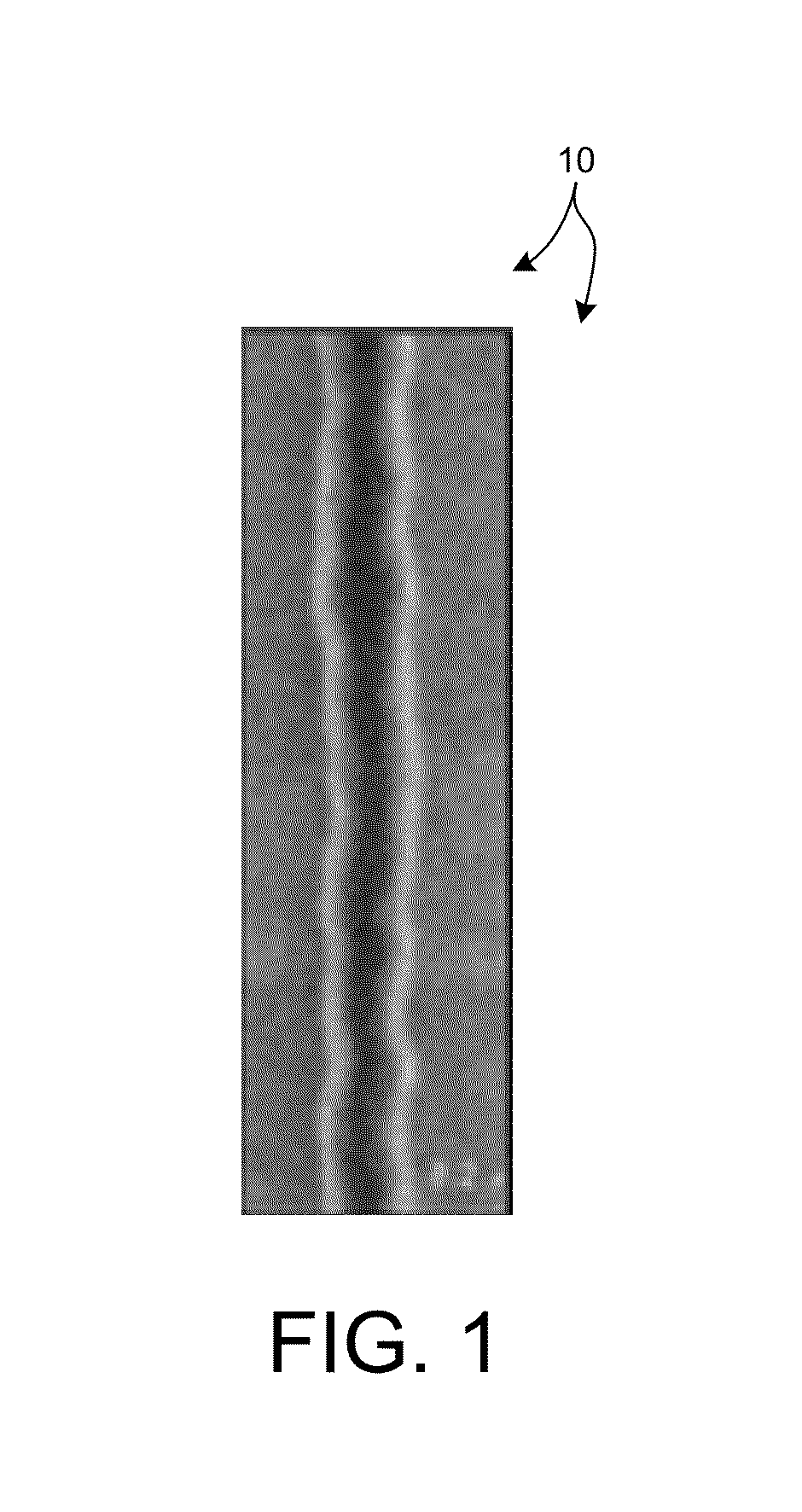Apparatus And Method Of Measuring Roughness And Other Parameters Of A Structure
- Summary
- Abstract
- Description
- Claims
- Application Information
AI Technical Summary
Benefits of technology
Problems solved by technology
Method used
Image
Examples
Embodiment Construction
[0035]Reference will now be made in detail to background examples and some embodiments of the invention, examples of which are illustrated in the accompanying drawings.
[0036]In an optical metrology or inspection system dedicated to the measurement of nominal structures (e.g., CD metrology, patterned wafer inspection, etc.), detection of a speckle pattern is undesirable measurement noise that degrades the measurement signals indicative of nominal structural parameters (e.g., nominal dimensions and nominal material properties such as lateral critical dimension, feature height, sidewall angle, film thickness, index of refraction, etc). As a consequence, steps are typically taken to reduce the speckle pattern by design (e.g., reduce the degree of spatial coherence of the illumination light) or by data analysis (e.g., averaging signals to remove the effect of the speckle field). However, the inventors have discovered that the speckle field is indicative of important structural irregulari...
PUM
 Login to View More
Login to View More Abstract
Description
Claims
Application Information
 Login to View More
Login to View More - R&D
- Intellectual Property
- Life Sciences
- Materials
- Tech Scout
- Unparalleled Data Quality
- Higher Quality Content
- 60% Fewer Hallucinations
Browse by: Latest US Patents, China's latest patents, Technical Efficacy Thesaurus, Application Domain, Technology Topic, Popular Technical Reports.
© 2025 PatSnap. All rights reserved.Legal|Privacy policy|Modern Slavery Act Transparency Statement|Sitemap|About US| Contact US: help@patsnap.com



